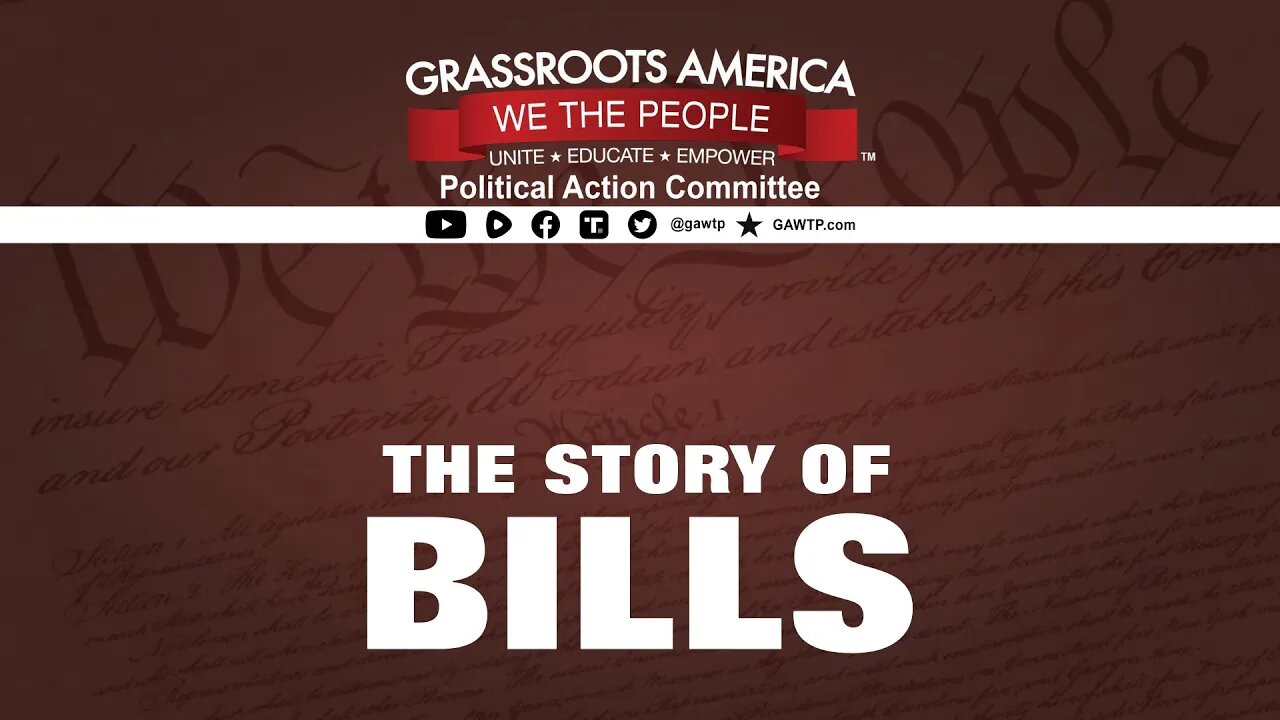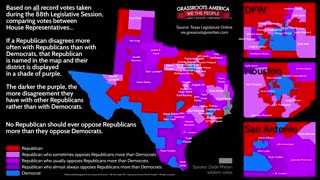Premium Only Content

Understanding the Story of Bills
The bills menu allows you to explore the story behind each of the bills filed during regular session.
While you can scroll through the bills, it's better to use the Filter Bills button to narrow down what you want to see.
The filter window gives you many options, and you can use multiple filters if you like.
You can search for a single bill by name or bill number. Let's use Matt Schaefer's good bill, HB 20, that would have created the border protection unit.
When you enter the bill name, GrassrootsPriorities.com will show you all of the bills that contain what you entered. You'll see not just HB 20, but HB 200, HB 201, and so on, because they contain HB 20 in the name of the bill.
Let's search for something more complex. Let's look for any GOP priority bill coauthored by Republican Kronda Thimesch that never made it out of committee.
42 bills match that criteria. When you choose to search for someone as a coauthor, it shows you the date they became a coauthor. Notice that there are a lot of dates in May.
If we click into the first bill, we see that it was filed in November. Anyone can sign onto a bill as a coauthor after January 17. Will Metcalf signed on as a coauthor on the 22nd of March.
The bill was referred to committee in February and never had a public hearing - effectively killing the bill.
So why is it deep into May that three people on May 6th decide to then coauthor a dead bill?
And that's not the only time that happened. Almost every bill in that list shares the same story - filed early, died in committee, and then in May Thimesch and others signed on as coauthor.
Let's look closer at HB 3765.
Each bill page shows you what happened to the bill, the caption (or brief description) for the bill, what committees first received the bill, and its authors and coauthors, sponsors and cosponsors.
If a bill's author and joint authors (together shown as authors) are all from one party, then it's declared as either a Democrat or Republican bill. If members of both parties on shown as authors, then we consider it a bipartisan bill.
Then we see the bill's history.
We see the House record votes and Senate votes.
And finally, we see those who witness list of those who advocated for or against a bill.
When viewing a bill, sometimes you will see a monetary amount attached to it. Since all of our data comes from Texas Legislature Online, the official source of record for the Texas Legislature, these figures displayed come from the fiscal notes issued by the Legislative Budget Bureau. We sum up the totals for the Five-Year Impact and display that amount for you.
-
 3:35
3:35
Grassroots America - We the People
1 year agoGrassroots Priorities Data Explanation
119 -
 2:51:00
2:51:00
Fresh and Fit
4 hours agoGirls Role play As Men And Pickup!
65.9K27 -
![[F EM UP Friday] Take # 2 [Destiny 2] Lets Kick Some A$$! #RumbleTakeOver](https://1a-1791.com/video/s8/1/c/W/7/1/cW71u.0kob-small-F-EM-UP-Friday-Take-2-Desti.jpg) 5:16:50
5:16:50
CHiLi XDD
5 hours ago[F EM UP Friday] Take # 2 [Destiny 2] Lets Kick Some A$$! #RumbleTakeOver
23.9K -
 5:13:43
5:13:43
ItsMossy
11 hours agoHALO WITH THE RUMBLERS (: #RUMBLETAKEOVER
19.2K1 -
 1:54:08
1:54:08
INFILTRATION85
5 hours agoHi, I'm INFILTRATION
26.1K7 -
 LIVE
LIVE
GuardianRUBY
6 hours agoRumble Takeover! The Rumblings are strong
2,178 watching -
 4:28:45
4:28:45
Etheraeon
14 hours agoWorld of Warcraft: Classic | Fresh Level 1 Druid | 500 Follower Goal
34.5K -
 3:17:21
3:17:21
VapinGamers
6 hours ago $3.16 earned🎮🔥Scrollin’ and Trollin’: ESO Adventures Unleashed!
23.2K2 -
 LIVE
LIVE
a12cat34dog
7 hours agoGETTING AFTERMATH COMPLETED :: Call of Duty: Black Ops 6 :: ZOMBIES CAMO GRIND w/Bubba {18+}
167 watching -
 8:23:18
8:23:18
NubesALot
9 hours ago $4.41 earnedDark Souls Remastered and party games
22.4K